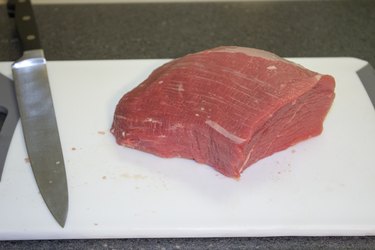
Cuts of beef -- from the delicate tenderloin to the flavorful but leather-tough shank -- vary widely in flavor and tenderness. Often, a tough large cut contains one or two small muscles that are unusually tender, which can be separated out by a careful meat cutter. One example is the beef shoulder petite tender, a very tender muscle cut from the otherwise-tough chuck. It's shaped like a flattened version of the beef tenderloin, and it can either be grilled whole or cut into medallions for faster cooking.
Grilling Whole
Video of the Day
Step 1
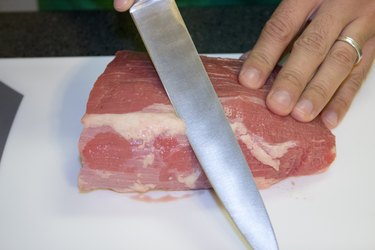
Place your petite tender on a cutting board. The surface should be free of any visible pieces of fat or connective tissue when you purchase it, but if not, use the tip of a sharp knife to trim them away.
Video of the Day
Step 2
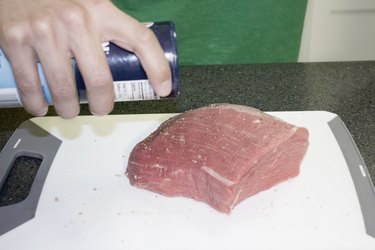
Season the petite tender on all sides with salt and pepper or, if you prefer, a seasoning spice mixture. Spray the surface lightly with cooking oil to help prevent sticking.
Step 3
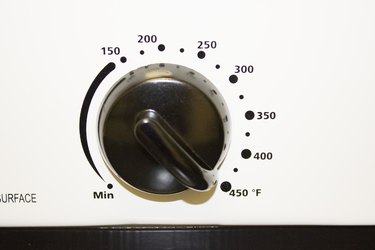
Preheat your grill to a medium-high heat, approximately 425 to 450 degrees Fahrenheit. Place your tender on the grill and close the lid. It's very lean, so flare-ups from melting fat aren't a concern.
Step 4
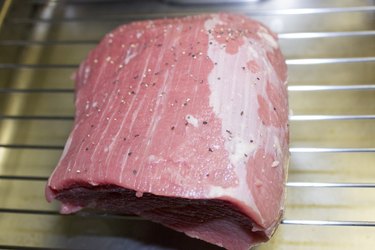
Grill the tender, turning once, until the beef reaches your desired degree of doneness. For medium-rare, this usually takes 14 to 16 minutes.
Step 5
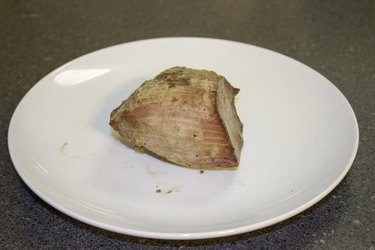
Remove the tender to a serving platter or clean cutting board and cover it loosely with foil. Let it rest for 8 to 10 minutes before slicing and serving it.
Grilling Medallions
Step 1
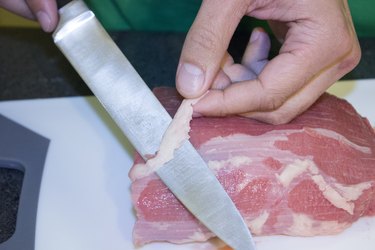
Trim any surface fat or connective tissue from your petite tender.
Step 2
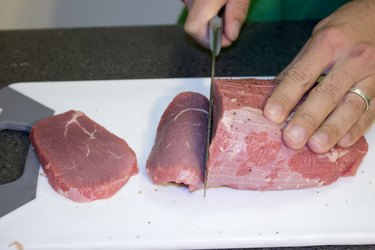
Cut the tender crosswise into medallions approximately 3/4-inch thick. Brush or spray the medallions lightly with oil to prevent sticking, then season them with salt and pepper.
Step 3
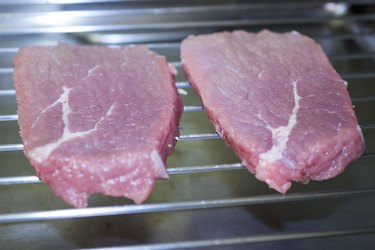
Place the medallions on a preheated grill and sear them for 3 to 5 minutes on the first side, until they're well marked by the grill. Turn and cook them for another 3 to 5 minutes, or until they reach your desired degree of doneness.
Step 4
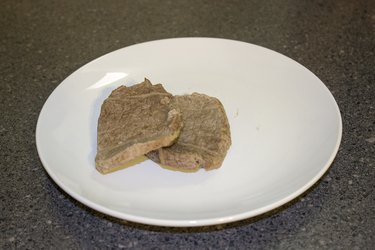
Remove the medallions from your grill and let them rest for 3 to 5 minutes before serving.
Things You'll Need
Sharp knife
Cutting board
Salt and pepper, or other seasonings to taste
Oil
Tip
Remove a whole tender from your grill when its temperature is at least 5 degrees Fahrenheit below the final temperature you want. For example, if you want a rare tender at 140 F, remove it from the grill at 135 F.
Whole tenders can also be roasted in a hot oven at 425 F, for approximately 20 to 25 minutes.
Tenders can range from 8 to 12 ounces or more. Allow 4 to 6 ounces per diner for a lunch portion, or 6 to 8 ounces for a dinner portion.